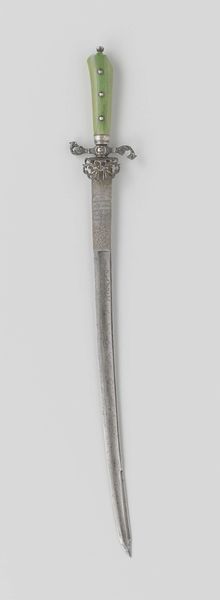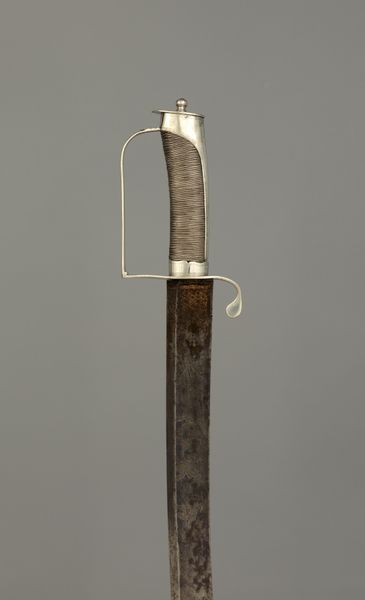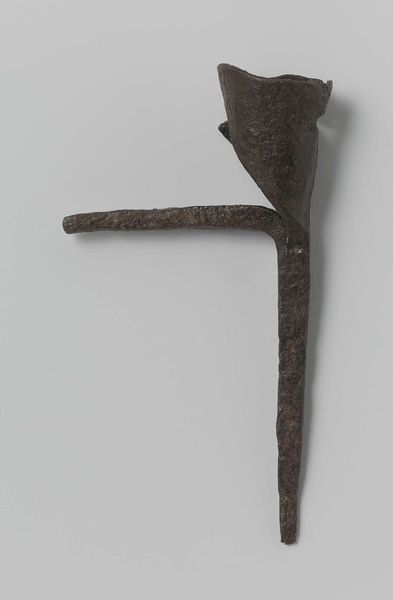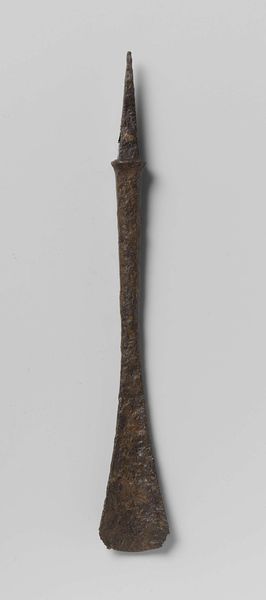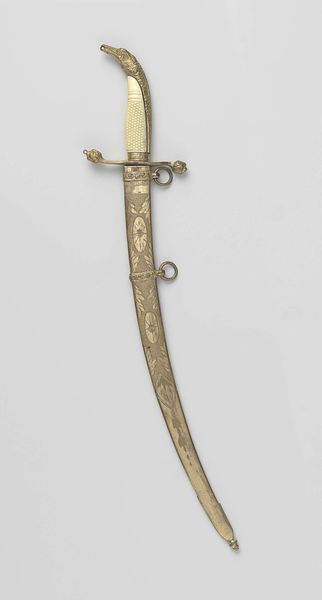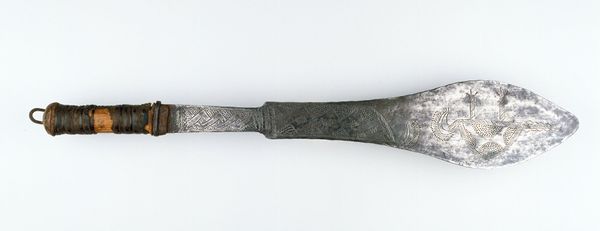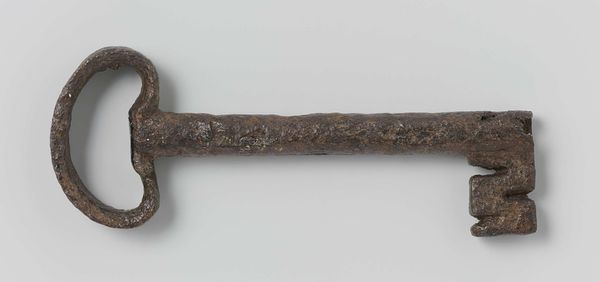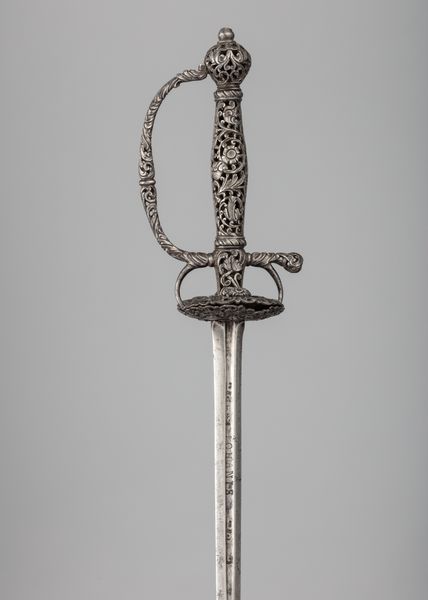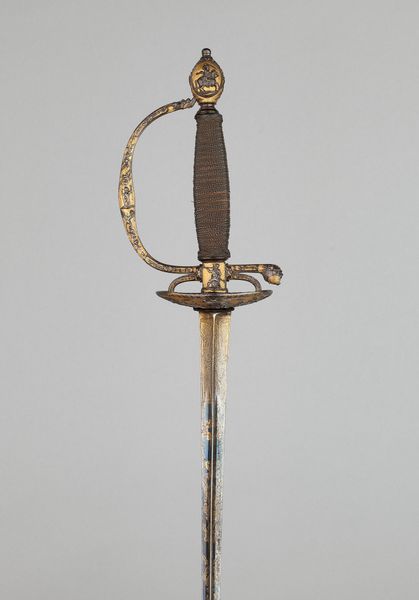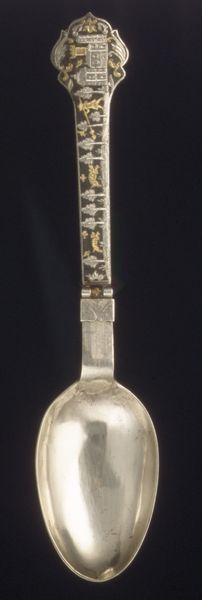
carving, metal, sculpture
#
carving
#
metal
#
form
#
geometric
#
sculpture
#
line
#
islamic-art
Dimensions: 18 x 5 x 3/4 in. (45.72 x 12.7 x 1.91 cm)
Copyright: Public Domain
Editor: So, this is a "Prestige Blade" from around the late 19th century. It's currently at the Minneapolis Institute of Art, created anonymously out of metal and carving. What strikes me immediately is how the blade’s geometry feels almost like a stylized tree. How might we interpret the forms and symbols in this piece? Curator: What you’re noticing is fascinating. The "tree" form isn’t accidental, I think. Consider that metal itself, transformed by human hands, gains potency. This blade transcends mere function; it embodies status, yes, but also memory. Look at the inscriptions carved into the blade. Do you see any repeated shapes or symbols? Editor: Yes, there seems to be repeating, curving motifs throughout the metal. It gives me the feeling of something ceremonial, more symbolic than practical, perhaps? Curator: Exactly. The curves likely represent the continuity of Islamic artistic tradition. But ask yourself, what do those curves *do*? The repeated use of such traditional art gestures evokes something larger than this particular object. A cultural heritage, perhaps? The repetition creates rhythm and visual harmony. This rhythm serves as a visual echo, reminding the viewer of its significance across time and generations. Can you see it acting like that? Editor: I see what you mean. The constant repetition of the curves, they tie it to cultural memory and tradition. Curator: It’s a weapon, but also an artwork loaded with historical and cultural weight. Weapons like these have acted as symbols of honor and connection with ancestors across many societies and contexts. How has our talk changed your initial perception of this blade? Editor: I initially saw the form, but now, the inscribed symbols give it so much more cultural significance! It is much more than a tool or even art object, it serves to activate social memory and remind its holder of cultural connections. Curator: Precisely, a memory palace forged in metal.
Comments
minneapolisinstituteofart almost 2 years ago
⋮
These prestige blades belonged to soldiers of the 19th-century Sudanese Mahdist army, at a time when Sudan was under Turkish-Egyptian colonial rule. In 1881, Muhammad Ahmad (1844-1885), a Sudanese religious leader, was heralded as Mahdi (lit. “Guided One” in Arabic) or messianic redeemer of the Islamic faith. He and his successor led successful military campaigns against Ottoman Turkish occupying forces. Members of the Mahdi military carried forked and branched blades inspired by the shape of Central African throwing knives. Unlike their Central African counterparts, these blades were not meant as weapons but as emblems of rank. Most of the engravings on these blades are not in Arabic and are illegible to humans. They may, like the wavy inscriptions on the tunic nearby, be addressing the supernatural jinn, or spirits, imploring them for assistance in the anticolonial battle. The shorter blade has Arabic calligraphy etched within medallions. One of these contains a verse from chapter 61 of the Qur’an, called Ranks or al-Safs: “Victory from God and an imminent conquest,” an exhortation to the fighter.
Join the conversation
Join millions of artists and users on Artera today and experience the ultimate creative platform.
